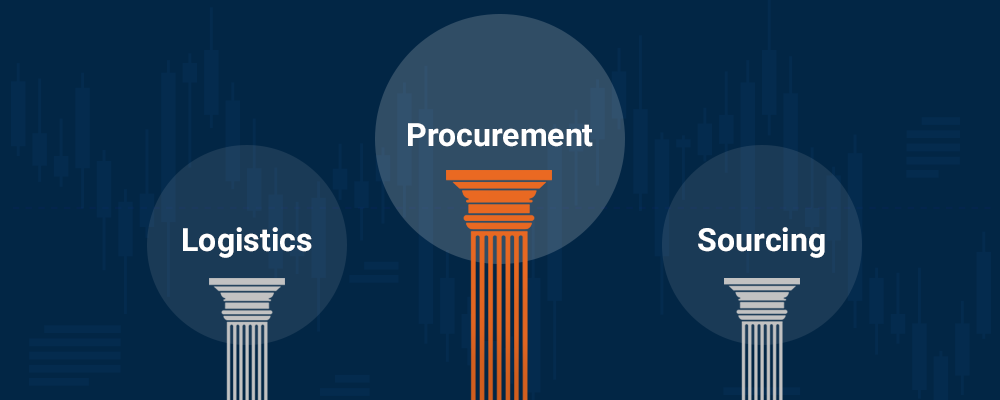However, finding actionable spend data can be a challenge for a healthcare procurement team. Organizations are always looking for ways to optimize their healthcare sourcing and logistics to save money. Strong data analysis is crucial in making the best decisions.
Learn how data-driven procurement strategies can improve the healthcare procurement process.
Improving the Healthcare Procurement Process: Ask the Expert
Tom Swapp, Vice President of Market Development – Acute for Direct Supply® DSSI™, discusses his history with this healthcare procurement challenge, as well as the ways in which he sees the industry solving this problem in the future.
DSSI: How did your career path lead you to DSSI and to healthcare procurement?
Tom Swapp: I spent an early portion of my career consulting on physician preference items in acute care, one of the largest areas of spend for most hospitals. One thing I noticed early on was that the data hospitals were working with was very confusing and it was never very clean. My team members and I spent untold hours trying to clean up the data in order to draw conclusions. We wanted to levy that to make better decisions going forward.
I realized that if there was a way to have cleaner data, it would result in huge time savings and increased cost effectiveness for the hospitals. Additionally, it could lead to better decision-making in healthcare procurement strategies.
DSSI: But grappling with that data led to your next move?
Tom: After that focus on PPI, I translated what I had learned in consulting to the hospital side of things in Denver, focused on procurement and strategic sourcing. I led a team of 25+. I experienced first-hand the manual pain of processing requisitions, purchase orders and the resulting integration process with AP.
There is such a lack of transparency and collaboration between suppliers and providers when it comes to the transaction side of the supply chain. In situations where market research isn’t as accessible or viable, transparency improves efficiency.
DSSI: Where did you go from there?
Tom: My next opportunity was on the GPO side. I went to work for a leader in the space. I oversaw a healthcare procurement consulting team focused on helping hospitals save money. That lack of easily accessible, clean data made it hard to see and implement the savings opportunities we knew were there.
Pain Point: A Lack of Clean Data
Throughout Tom’s career, the main procurement process pain point and healthcare supply chain challenge was clean data. Organizations in his career either withheld data science or underestimated the wide range of actionable insights it could provide. Strategic planning was more difficult without strong data management.. Direct Supply DSSI has the power to help create a streamlined procurement and purchase process with actionable data.
The Three Pillars of the Healthcare Supply Chain
In the healthcare procurement process, the healthcare supply chain can be split into three pillars. Of those three pillars, logistics and sourcing hinge heavily on procurement. Sound management of the goods or services and the vendor master completely dictates data integrity.

- Logistics (Distributors)
- Sourcing (GPOs)
- Procurement (ERPS)
The foundation that delivers real savings and real outcomes is procurement. You can’t have an effective sourcing strategy without really sound procurement principles. Likewise, you can’t have a good distribution strategy without great procurement.
Additionally, procurement is often overlooked and the data to drive it is difficult to extract. The data is often pulled from an ERP that is not built to optimize for the supply chain.
Optimizing ERPs in Healthcare Procurement
Not all ERP systems are optimized for supply chain and strategically built for procurement sourcing. When trying to extract data from them, item and vendor masters can be messy. Nothing is built in collaboration with the supplier community to allow for greater visibility and coordination. Optimizing and strategically shaping ERPs in healthcare procurement strategies can bring a lot to the table for process improvement.
The Benefits of Optimization
By optimizing ERPs in the healthcare procurement process, organizations can streamline their supply chain operations and improve efficiency. This can lead to cost savings, better vendor management, and ultimately, improved patient care.
By working closely with suppliers and integrating their systems with ERPs, healthcare organizations can enhance visibility and coordination throughout the procurement process. This collaboration can also lead to better negotiation strategies and improved relationships with suppliers. Overall, optimizing ERPs in healthcare procurement can have a significant impact on the overall success of an organization’s supply chain management.
Successful procurement strategies are the byproduct of an organization mastering their contract management. The contract should dictate the procurement terms and flow and overall, the entire healthcare procurement strategy. A supply chain ERP would be a contract visualization and compliance engine for Health System’s contracts both local and GPO. However, most ERPs don’t contain a rules engine that can be smart enough to drive procurement in an intelligent manner.
The Role of AI in Data-Driven Decision Making
Artificial intelligence (AI) in healthcare procurement provides another advantage to data-driven healthcare procurement strategies. AI and machine learning can drive savings in the healthcare procurement process. By utilizing AI in healthcare procurement, organizations can streamline their processes and make more informed decisions based on data analysis. AI can help identify cost-saving opportunities, optimize supplier relationships, and improve overall efficiency in the procurement process.
With automated alerts and recommendations, healthcare organizations can stay ahead of market trends and make proactive decisions to ensure they are getting the best value for their procurement needs.
As technology continues to advance, leveraging AI in healthcare procurement will become increasingly important for organizations looking to stay competitive in the ever-evolving healthcare industry. Discover why AI matters in healthcare in conjunction with your healthcare procurement strategy.
Improving and Optimizing Healthcare Procurement with DSSI
Clean and actionable data can lead to overall procurement process improvement and a streamlined healthcare procurement strategy. When healthcare organizations optimize their spend and can effectively utilize their ERPs, they can unlock true supply chain savings. Products or services move efficiently and effectively, cost reduction soars, and the procurement department can meet their business goals.
Thanks to the Direct Supply DSSI patented OGM (order guide management) solution, and DSSI Analyze, for the first time ever, healthcare organizations can do just that. See for yourself how DSSI builds an optimized healthcare procurement process that revolutionizes the way organizations make procurement a strategic priority.
Try DSSI Analyze™ Today
Contact us for a free demo and initial savings analysis.

Tom Swapp is the Vice President of Market Development – Acute for Direct Supply® DSSI™. He joined DSSI in 2019 after many years of building expertise in the world of hospital supply chain. Tom holds an undergraduate degree from Brigham Young University in Economics and an MBA from the University of Colorado at Denver.




